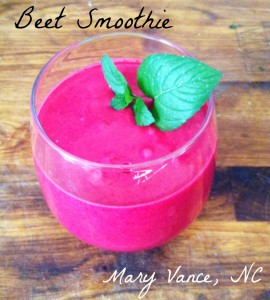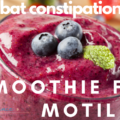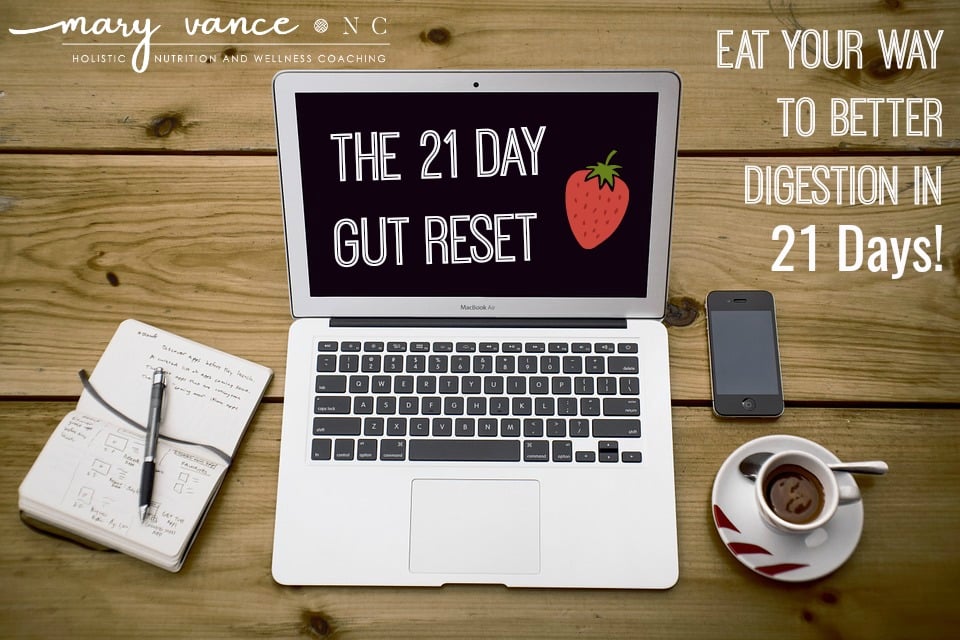Do you use protein powders in your smoothies or drinks? It’s a pretty hotly contested topic among nutritionists and foodies. Many feel that protein powder isn’t a real food, having been processed and powderized.
Most protein powders out there contain unsavory fake ingredients like soy protein isolate or non-whole-foods like egg whites or whey protein isolate. And they contain fillers like gums, stabilizers, sugar solids or vegetable oils that can upset sensitive systems. During processing they are heated to extreme temperatures that can denature the delicate proteins (especially true for whey and egg). With that said, are they necessary? OK to use? Safe?
Is Protein Powder Bad for You?
I always recommend using protein powder in smoothies for blood sugar stabilization and a protein boost at breakfast, but the type you choose matters. I’ve never recommended using soy, egg white, or whey protein that has been subject to heat processing (which are most you find on store shelves), so I always advised folks to use Designs for Health PaleoMeal or Whey Cool whey protein because it is made from raw milk from grass fed cows, and they use low heat processing methods to preserve nutrients. BUT because many people I work with can’t handle dairy, they don’t tolerate whey, so I don’t really recommend using whey unless you know you don’t have a dairy sensitivity.
The protein powders I have liked and recommended are bone broth proteins or vegan and made from rice protein, hemp protein, pea protein (or a combo). Some contain organic green superfoods (like Amazing Meal) or combinations of sprouted grains and seeds (like Garden of Life Raw Protein Code). I still think these are pretty good quality products without any fillers (Amazing Meal does have guar gum stabilizer I think), but obviously if you are strict paleo you may balk at the grains and legumes. I think the processing removes the phytic acid, so it’s not a big concern.
But if you’re wanting whole foods only, protein powder, no matter how clean, is still processed into powder form, and I do like people to stick to whole foods. Arguably, anytime you’re eating olive oil, coconut oil, coconut milk, gelatin, or even ground beef, those foods have all been processed to make them edible. But they are as close to their natural state as is convenient for us. And the closest we eat food to their natural state with the fewest ingredients added, the better we fare. So, why would I continue to endorse protein powder?
There are a few instances where I will recommend it:
Scenario One: I have a new client who has been subsisting on entirely processed foods, takeout, and hates cooking. A breakfast smoothie is the perfect way to get this type of person involved in making a quick and easy breakfast smoothie that can be packed with superfoods, good fats and protein. Click here to learn how to build an ideal superfood smoothie.

Spirulina is a blue-green algae that can be added to smoothies for a cleansing boost, and it’s super rich in minerals. Obviously it doesn’t look quite like this when you add it to your smoothie. It has to be dried and powdered.
Scenario Two: This person skips breakfast, doesn’t have time for breakfast, or is just learning to cook. A smoothie or a quick porridge with some added protein powder takes just 5 minutes to prepare.
Scenario Three: This person has severe autoimmune issues and reacts to everything he or she eats. This is unfortunately more common than you might think. In this case, foods that are easy to digest and contain minimal allergens, like rice or pea protein, is a good way to get nutrients in the person. I typically have them do lots of broth too, but if they react to histamine-producing foods, sometimes they can’t even do broth!
Scenario Four: This client wants to do a liver cleanse OR has a lot of gas and bloating issues. Smoothies can be great during a cleanse to give your GI tract a rest from inflammation; plus you can combine them with liver-friendly superfoods like chlorella, spirulina, grated ginger, chia seeds, etc. If the person has a lot of GI issues, while we’re working on healing, smoothies can be a great non-reactive breakfast. In this case I really like PaleoCleanse detox smoothie mix.
Scenario Five: This person is transitioning from a vegetarian diet into experimenting with more animal protein and feels “gross” eating animal protein for breakfast. I often recommend collagen smoothies for these folks. Click here to read why I love collagen so much, and why it’s a superfood.
There are some folks who are not well served by smoothies. These people have hypoglycemic tendencies, sugar sensitivity, and/or issues feeling hungry all the time. In this case if they are using smoothie mix, even if it’s got 15 grams or more of protein, I find the grain- or seed- based proteins break down into sugar quickly enough in the system to jack blood sugar and insulin levels, only to cause a crash later, leaving them hungry and possibly hypoglycemic. I typically tell people NOT to overload their smoothies with fruit, and to use full fat coconut milk and almond butter for good fats and chia/psyllium for good fiber. Click here for my post on how to build the perfect smoothie. But it can still disrupt blood sugar in extremely sugar sensitive people who fare better eating unprocessed or animal protein at each meal until their metabolism heals a bit.
As mentioned, I am a fan of using collagen in smoothies. I don’t think it has the same blood sugar disrupting effect as protein powder because it is not absorbed and broken down into sugar as quickly since it comes from broken down animal products. It’s high in amino acids that nourish skin, joints, and hair. If I suspect someone is sugar sensitive, he or she could try collagen in a smoothie and not overload it with fruits like banana or mango that jack blood sugar. I’ll have them use pumpkin as a base and combine with tahini, coconut milk, and pumpkin pie spices, for example, so it’s lower in sugars. You could also add raw milk or egg yolks for extra protein if you’re not sensitive to dairy or eggs. Make SURE you get them from the farmers’ market or a local farmer– don’t use store bought factory farmed eggs. Egg yolks add a delicious richness to fruit smoothies with gelatin.
Protein Powders I like
- PaleoMeal (contains whey)
- Pure Paleo Protein
- PaleoMeal Dairy free
- PaleoCleanse
- Amazing Meal
- Garden of Life Raw Protein Code
- Collagen I use
Here’s a smoothie I made with beetroot, raspberry, gelatin, chia and coconut milk. It was delicious!

Mary Vance is a Certified Nutrition Consultant and author specializing in digestive health. She combines a science-based approach with natural therapies to rebalance the body. In addition to her 1:1 coaching, she offers courses to help you heal your gut and improve your health. Mary lives in San Francisco and Lake Tahoe in Northern California. Read more about her coaching practice here and her background here.







hi Mary,
this post was very close to my heart, as I’ve been a smoothie guy for years. 2 months ago I found a brown rice sprout protein powder at Whole Foods (whole paycheck?) and finally got off soy. I’m “Scenario Three” as far as I can tell (w/ a bit of the time issues of Two, and G.I. issues of Four). Being off soy (largely due to your recommendations) has enormously reduced my stomach aches and skin breakouts. No cheese either for two months now, so that could be playing a role. Are you familiar with Whole Foods’ brown rice sprout protein powder? Am I fooling myself and eating bad stuff again? Thanks!!
Hi Ian, glad you’re off the soy! I haven’t seen that one in particular. My point is that they’re all processed; it’s just the extent the matters. I think the Garden of Life Raw protein code is exposed to less heat and contains a full spectrum of sprouted grain proteins. I’d bet the Whole Foods brand is exposed to higher heat processing, which damages the protein.
thanks for the info, I’m still a little confused for my situation, perhaps you can offer fresh ideas?
I use protein powder because I’m like scenario #3, I react to everything and have issues with digestion, sometimes its hard to eat, my weight is low but stable and healthy. I found one that is as good as I can get, I’m also allergic to beef, soy, can’t handle rice in any form. I limit my dairy to occasionally and I think I have some egg issues, I just eat them very occasionally which is generally better for me to rotate all my foods anyways. I use the PP only occasionally as well.
I have healed quite a bit with GAPS, I’m now more paelo. Am GF as well but not gluten sensitive, I just dont like the carb crashes, feel better without it.
So any thoughts on whats the best pp for me?
(I don’t eat grains, sprouted or otherwise, I do soak and dehydrate my nuts, make my own fermented sour cream, and yogurt)
Try the 100% Pea Protein (non GMO) from designs for health– very hypoallergenic + easy to digest:
http://amzn.to/12Bhgt6
(the link is for vanilla but you can get unflavored too).
I typically recommend Biocleanse Plus or ClearVite if you’re working on gut healing or react to multiple foods, but those aren’t 100% ideal bc they contain some fillers. They do support liver detox + GI Inflammation though. But if you react to rice, even in protein powder, you’d want to avoid those. Designs for Health is a good company with great quality supplements.
thanks so much for the info! Haven’t been able to figure out what to do about protein, especially with my server autoimmune issues. I just ordered the Pea Protein you recommended. Is there something you can recommend that’s a detox + GI Inflammation like Biocleanse that you can recommend that does not have rice? I pretty much have to lay off all grains, legumes, eggs, soy and dairy. It’s really hard to find things to eat.
Have you seen the autoimmune cookbook? It would help you a lot!
https://maryvancenc.com/2013/05/autoimmune-download-this-awesome-cookbook/
I would also use gelatin for gut healing and to address inflammation:
https://maryvancenc.com/2013/06/why-i-love-gelatin-and-not-jell-o/
You can use it in smoothies.